Unlocking the Genius of Nikola Tesla, brief h
I. Introduction This section will provide an overview o...
During the pre-1800s, Dubai was a small fishing port and pearling town. Before this period, there is not much evidence of civilization in the region. In the early 1800s, modern Dubai began to emerge with the Bin Nayef dynasty coming to rule the area. This clan started construction of the earliest buildings, including forts and some permanent structures.
The trading port was further developed by Sheikh Maktoum bin Butti in 1833. During this period, traders from all over the world visited Dubai due to its strategic location at the mouth of the Persian Gulf. The pearl market and fishing industry also prospered during this time.
By the late 19th century, the Al Maktoum dynasty had consolidated power in Dubai and brought together various sheikhdoms in the area. This led to more trade and economic growth in Dubai, making it an important regional hub for commerce.

Dubai is an Emirate within the United Arab Emirates, located on the southeast coast of the Persian Gulf. The earliest recorded mention of Dubai dates back to the 10th century where it was mentioned as the location of a trading port. During its early history, the economy of Dubai’s surrounding area relied heavily upon fishing, pearling and sea trade.
In the 19th century, Dubai became part of an important trade route between India and Mesopotamia, connecting the two regions with a regular flow of goods and services. In 1833, the Al-Maktoum dynasty took over authority of the region and began to develop the area into a major trade hub.
The growth of Dubai during this period was largely due to the introduction of major infrastructure projects. The first of these was the building of a stone wall and ditch to protect the city from invaders. Other projects included the construction of roads, seawalls, and even an aqueduct. These measures helped to further bolster Dubai’s reputation as an important trading port and made it a popular destination for merchants from all over the region.
In addition to these infrastructure projects, major investments in the maritime industry began to take place in Dubai during this period. The Al-Maktoum family established their own shipping companies which allowed them to monopolize trade between India, Persia and Mesopotamia. This gave them control over all ports in the Persian Gulf and allowed them to further expand their influence throughout the region.
The Al-Maktoums also used their position to encourage other investors to come to Dubai by offering tax incentives. This enabled them to establish themselves further as rulers over the region and further grow their influence.
As Dubai continued to grow, so did its economy. The region began to attract more foreign investment due to its strategic location between India and Mesopotamia and its close proximity to Europe. By the late 19th century, Dubai had become an important trading hub in its own right, with traders coming from all over the world to take advantage of its many advantages.
Today, Dubai is one of the most important cities in the Middle East and a major hub for business and finance. Its early history has helped shape it into a prosperous and vibrant city that is full of unique culture and history.

Since ancient times, Dubai has been a thriving hub of human activity. Evidence of human habitation in the area dates back to the Stone Age, with archeological findings showing that hunter-gatherers roamed the land as early as 7,000 BC. The subsequent Bronze Age saw the region’s inhabitants develop a more complex agricultural lifestyle, and by the Iron Age, Dubai had become linked to seafaring trade routes with distant lands.
During the Umayyad period (661-750 AD), Dubai flourished as a vital port city on the Arabian Gulf route, with ships from India, China and the Far East bringing goods and exotic luxuries to be traded in the region. In 1302, the city was officially named Dubai by Arab nomads who chose to make it their home.
It wasn’t until 1833 when Dubai gained major prominence, as warring tribes from the Persian Gulf region chose it as their meeting point. Sheikh Maktoum bin Buti Al Maktoum, founder of the Al Maktoum family dynasty, established Dubai as a self-ruling principality and subsequently extended his rule over parts of Oman and Bahrain.
The discovery of oil in 1966 marked a new era of unprecedented growth for Dubai. The emirate was transformed into an economic powerhouse, driven by its lucrative petrochemical industry and tourism sector. The city gained even more attention in 2006 when Sheikh Mohammed bin Rashid Al Maktoum, current ruler of Dubai, began an ambitious project called “Dubai Miracle” which included building some of the world’s most iconic landmarks, including Burj Khalifa, the world’s tallest tower.
To this day, Dubai continues to attract visitors from around the world, with its cosmopolitan atmosphere and fast-paced lifestyle. As one of the world’s most advanced cities and a major financial center in the Middle East, Dubai stands as a vibrant testament to its long and illustrious history.

Dubai is one of the most prosperous cities in the world today, with a bustling international economy and some of the most luxurious hotels and attractions in the world. But many people don’t know that at one time, it was a small fishing village that was part of the ancient Sassanid Empire.
The Sassanid Empire was founded in 224 CE and was located primarily in modern-day Iran. It was an expansive empire, stretching from what is now Central Asia all the way to the Arabian Peninsula. The present-day region of Dubai was part of this empire and was an important trading port for merchants from across the world. In particular, ships from India and China frequented this port, bringing goods from far away lands.
The area also had a strong military presence, as the Sassanids used strategic locations to protect their borders from invasions by their neighbors. The great Emirate of Dubai was built on its ancient foundations, as evidenced by its sophisticated fortifications and towers that still stand today.
The area prospered under the Sassanids, and it was not until 633 CE that the city was conquered by the Islamic Caliphate. Under the new rulers, Dubai continued to be an important trading port and soon began to expand even further into the Gulf region. By the 19th century, Dubai’s economy had transitioned into pearling and fishing, though it remained a small village until after World War I.
The town of Dubai rose to international prominence in 1966 following oil discoveries in the region, leading to its transformation into a major financial hub by the 21st century.
Today, the city of Dubai is a thriving metropolis that stands in stark contrast to its past as a part of the Sassanid Empire. Yet its long history has helped shape it into one of the most vibrant and exciting cities in the world.

The Bani Yas Tribe is one of the oldest and most influential tribes in the United Arab Emirates (UAE). It is believed to have been founded in 1780 by the leader Yarub bin Khalfan Al Naqbi, who migrated from neighboring Oman. Over the years, the tribe has played a major role in the development of Dubai and other parts of the UAE.
In 1820, the tribe’s leader Sheikh Maktoum bin Butti Al-Maktoum united the emirates of Abu Dhabi and Dubai under his rule. Sheikh Maktoum bin Butti Al-Maktoum’s grandfather was Sheikh Tahnun bin Shakhbut Al-Nahyan, a member of the Bani Yas tribe and leader of Abu Dhabi.
The unification of Abu Dhabi and Dubai marked the start of the Bani Yas tribe’s dominance over the region. With increased trade between the two cities, their strength and influence grew further. By 1853, Sheikh Maktoum bin Butti Al-Maktoum had become ruler of most of what is now the United Arab Emirates.
The tribe continued to have an important role in the region’s development and by the 20th century, they were a major force in the pearl fishing industry. The pearling industry was a major source of income for many members of the Bani Yas tribe and their prosperity increased greatly as a result.
In the 1950s, Sheikh Rashid bin Saeed Al-Maktoum, a member of the Bani Yas tribe, became ruler of Dubai. The time of his rule marked a new period of prosperity for Dubai and its people. Sheikh Rashid bin Saeed Al-Maktoum was a great leader and visionary. He oversaw massive investment into Dubai and helped transform it from a simple fishing village into a modern metropolis.
Today, Dubai stands as a testament to Sheikh Rashid bin Saeed Al-Maktoum’s leadership and vision for Dubai and its people. The success of Dubai would not have been possible without the support and guidance of the Bani Yas tribe. It’s clear that without them, Dubai would not be what it is today.
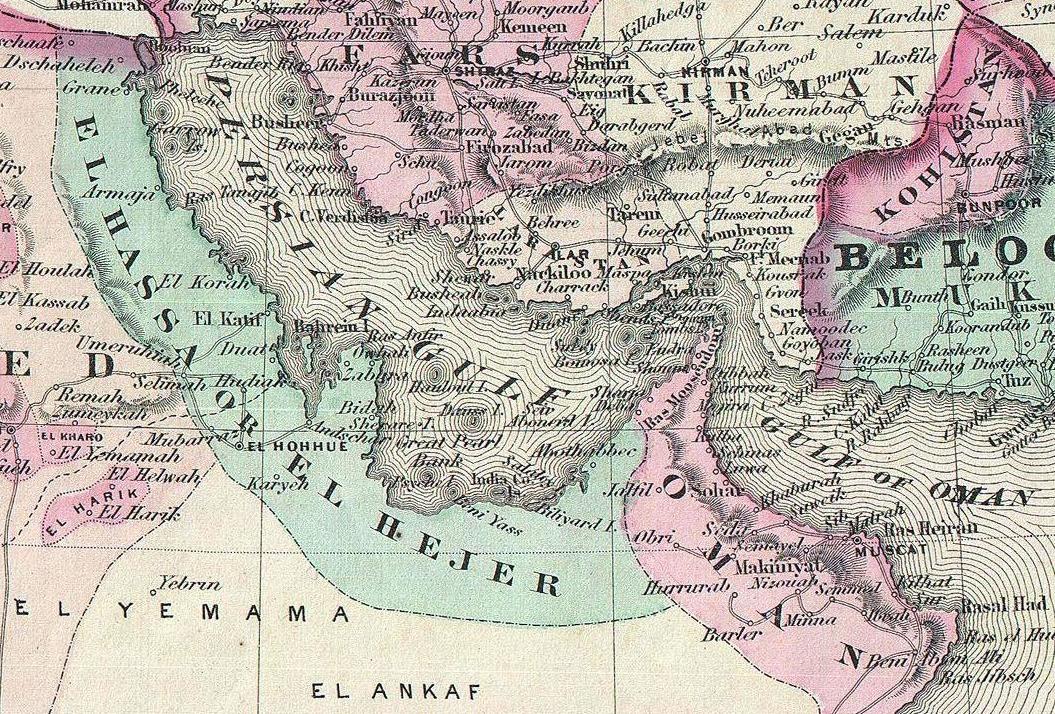
The Bani Yas tribe, led by the Maktoum family, has an impressive and long-standing legacy in the area now known as Dubai. The members of the tribe settled in the area in the early 1800s, long before Dubai would become a global destination for trade and tourism.
The Bani Yas are a semi-nomadic tribe who have been living in the region for centuries, nomadically roaming in search of food, water, and other resources. Prior to the settling of the Bani Yas, the region was populated by local Bedouins and other nomadic tribes. It was during this time that the Maktoum family began to make a name for themselves as expert traders and strong leaders. In 1833, they established a small trading post at what is now known as Dubai – the very same port that would later become the bustling metropolis it is today.
The Maktoum family’s establishment of a port in Dubai was a major factor contributing to its growth. Dubai’s location on the coast of the Arabian Gulf made it a perfect spot for foreign ships to dock and take on supplies such as pearls, dates, and spices. It soon became a thriving hub of commerce and trade between India, Africa, and Europe.
In addition to being expert traders, the Maktoums were also shrewd politicians. They maintained good relationships with their neighbours, allowing Dubai to enjoy relative stability during a time when much of the Middle East was in turmoil. They also had great success in expanding the reach of their trading network, allowing them to build a great deal of wealth and influence.
The Maktoum family’s leadership of the Bani Yas tribe played a major role in shaping what Dubai is today. The era of their rule set the foundation for the development of this small port town into a modern international hub, and they remain a large part of Dubai’s history even to this day. Their legacy is celebrated throughout the city in monuments, parks, buildings and more.
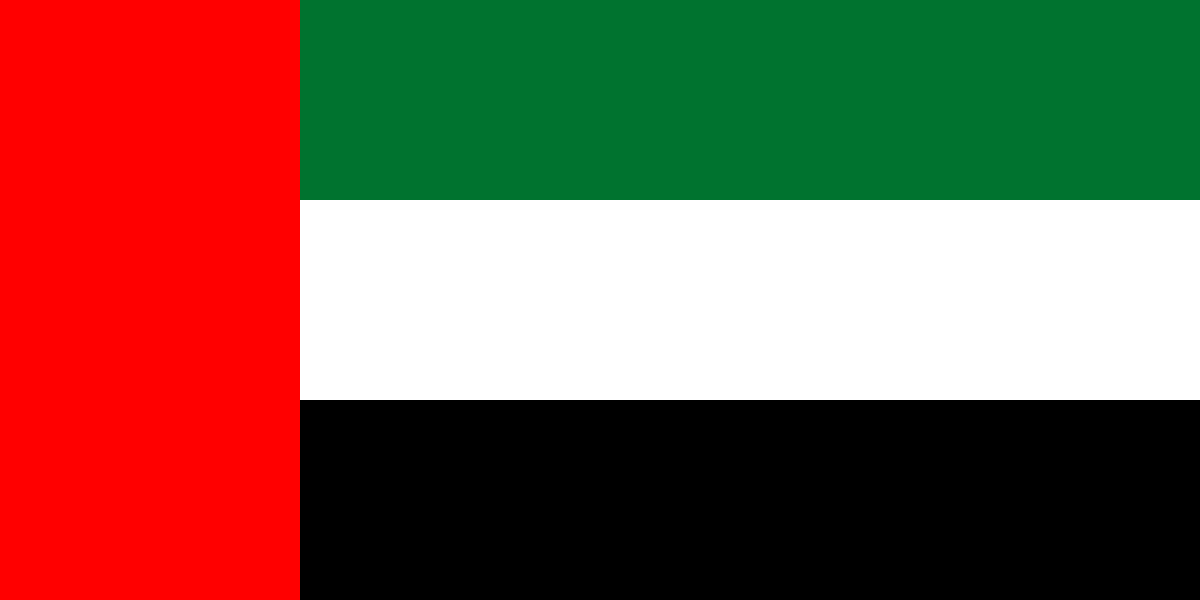
The history of Dubai is deeply intertwined with the history of its indigenous tribe, the Bani Yas. The tribe, believed to have arrived in the area in the early 19th century, established a small fishing and trading settlement at the mouth of the Creek, which was to become the nucleus of modern-day Dubai.
In 1833, Sheikh Maktoum bin Butti Al Maktoum, leader of the Bani Yas tribe, signed a Perpetual Maritime Truce with Britain which allowed for the establishment of a formal port and trading hub along Dubai’s coastline. As a result of this port, Dubai quickly became known as an important gateway between Europe and Asia.
Shortly after his agreement with Britain, Sheikh Maktoum started to build fortifications around the port and encouraged immigration from nearby towns and villages. He also forged relationships with foreign traders and merchants, and enticed them by offering generous incentives such as free trade and residence rights. This attracted many entrepreneurs who had no previous experience in trading, but sought to capitalize on Dubai’s rapidly growing importance in international trade and commerce.
In the following decades, Dubai began to grow drastically in size and scope. New industries were set up, including pearling and textile production, while trade prospered thanks to Dubai’s strategic location along important maritime routes. Soon, Dubai was becoming one of the most important ports in the Middle East and an attractive destination for international traders.
The discovery of oil in 1960 gave a major boost to Dubai’s economy, transforming it from a sleepy fishing village into a prosperous metropolis. Sheikh Rashid bin Saeed Al Maktoum established the first modern banking system in the region and began construction projects such as roads, airports and other infrastructure. This led to rapid growth in population and industry, and what is now known as modern Dubai was born.
Despite its rapid transformation from a small fishing and trading settlement into a vibrant metropolis over the course of two centuries, Dubai’s roots remain firmly entrenched in its indigenous tribe, the Bani Yas. Their influence can still be seen today in everything from customs to architecture, reminding us of how this small fishing settlement became the cosmopolitan hub that we know today.
In the 1800s, Dubai was a small fishing village on the northeast coast of the Arabian Peninsula. The population was mainly Bedouin, and trade was done with the neighboring city of Sharjah. In the late 1800s, Dubai was part of the Trucial States, an important trading and maritime center in the Indian Ocean region. During this period of time, Dubai’s economy grew as pearl diving and fishing became increasingly important sources of income.
By the early 1900s, Dubai had become a major port and trading hub for merchants to cross routes between the Persian Gulf and India. The port saw numerous vessels stop by for supplies, bringing with them goods from all over the world. This period saw Dubai become known for its high-quality textiles and handicrafts, as well as its bustling marketplaces. In the 1940s, oil was discovered in nearby Abu Dhabi and Dubai soon benefited from these new economic opportunities as well.
The 1950s marked a more prosperous era for Dubai. In 1958, the United Arab Emirates was formed with Dubai becoming one of its seven Emirates. During this time, the first airport was constructed and investment began pouring into the city to develop infrastructure, including roads and docks. By the 1960s, Dubai had seen a massive surge in international visitors and it became an attractive destination for global businesses to invest in. The city’s population increased tenfold between 1950 and 1966, and it has continued to grow ever since.

Dubai, the glittering jewel of the United Arab Emirates, has undergone a remarkable transformation in recent decades. In the 1970s, it was a small coastal city with little more than a fishing and trading industry. Today, it is a modern megalopolis with a booming economy, skyscrapers, world-class shopping, and some of the most luxurious real estate in the world. This transformation can be attributed to its aggressive expansion strategy, which has seen Dubai rapidly evolve into a major global financial hub and tourist destination.
In the early 2000s, Dubai began investing heavily in infrastructure projects to promote trade and tourism. The Burj Khalifa, the world’s tallest building, and the Palm Islands complex of luxury resorts were two of the most prominent developments that marked the beginning of Dubai’s rapid growth. As tourism surged, so did investments from local and international businesses, which further propelled the city’s development.
The government of Dubai also played an important role in its rise as an economic powerhouse. In 2003, Dubai launched its International Financial Centre (DIFC) as part of a plan to make the city a regional banking hub. To attract foreign investors, the DIFC established numerous economic incentives such as tax exemptions and relaxed regulations. This move attracted some of the leading global banks, who set up headquarters in Dubai and helped make it one of the main financial centres in the Middle East.
Dubai also took advantage of its proximity to other international hubs to become a key player in global logistics. The Jebel Ali Free Zone Authority, established in 1985, provided an attractive environment for businesses to thrive. Multinational companies such as Hewlett-Packard and Microsoft set up operations in the free zone to take advantage of its zero-tax policy and streamlined regulations.
Today, Dubai’s impressive skyline is evidence of its extraordinary expansion over the past few decades. It has become an example for other cities around the world of how careful planning, heavy investment, and incentives can create an attractive environment for business and tourism. Although some have raised concerns about the sustainability of such rapid growth, Dubai is undoubtedly among the most prominent cities in the world and continues to draw in visitors from all corners of the globe.
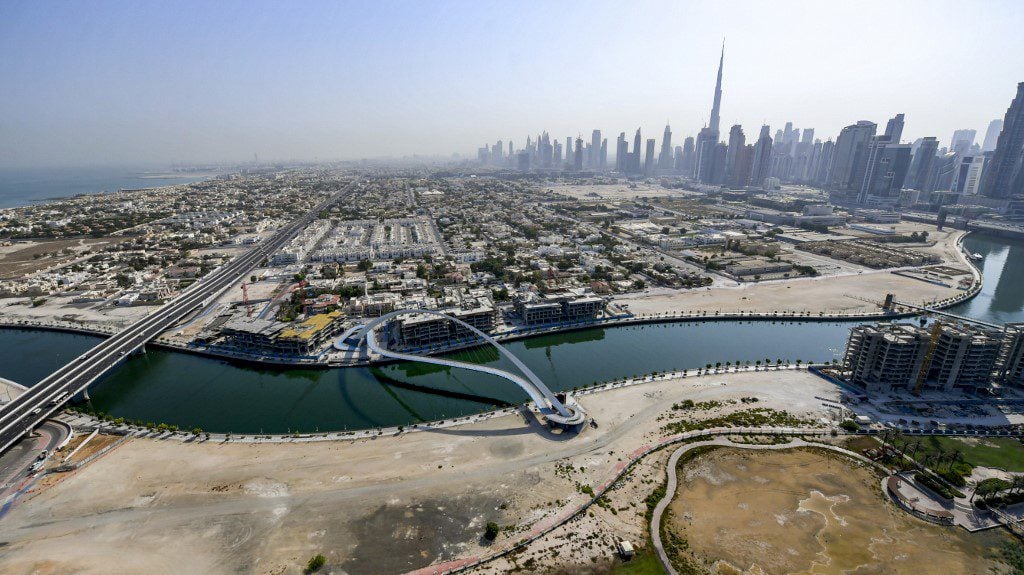
The Al Maktoum dynasty’s takeover of the Dubai area in 1833 marked the beginning of an era of unprecedented expansion and development. Before this, the area had been a small fishing village, but after Sheikh Maktoum bin Buti Al Maktoum became ruler, its fortunes changed dramatically. Under Sheikh Maktoum and his descendants, the settlement grew from a small village into a major trading and financial hub.
In 1894, the first move towards modernizing Dubai was made when the Ruler Sheikh Maktoum bin Hasher Al Maktoum ordered for the construction of a port in Deira – Dubai’s current waterfront district. The first shipment through the port was in May 1899 and soon after it started handling ships from around the world. This set the stage for Dubai’s later success as a major trade center.
The Al Maktoum family continued to have a big focus on making Dubai a thriving port city. In 1921, they moved the capital to Dubai from Abu Dhabi, further emphasizing their commitment to its development. They also began to promote foreign businesses investing in Dubai and introduced new taxation rules, facilitating financial growth.
In the 1950s, oil exploration in the region further transformed the country and its economy. Oil revenue allowed for vast improvements that included building infrastructure such as roads, ports, hospitals and schools, as well as laying foundations for other industries such as finance and tourism. Sheikh Rashid Bin Saeed Al Maktoum – who succeeded his father Sheikh Saeed Bin Maktoum Al Maktoum – laid the groundwork for transforming Dubai into one of the most modern cities in the world.
Finally, in 1971, Sheikh Rashid Bin Saeed Al Maktoum declared independence of Dubai as part of federation of United Arab Emirates. Since then, Dubai has kept up its impressive growth curve and emerged as one of the world’s most vibrant and exciting cities. Its transformation has been remarkable, but it all started back in 1833 when the Al Maktoum dynasty took control of the area and began to expand the settlement with ambitious plans that laid the foundation for the bustling metropolis of today.

Dubai’s vibrant trading sector began during the late 1800s, when the small desert region became a major port city for international trade. Goods and products coming in to Dubai included those from India, East Africa and the Persian Gulf, and long before its modern-day affluence, the city had a thriving commercial culture.
The “Dubai Creek” served as a vital part of the trading activities in late 19th century Dubai. Craftsmen ferrying goods from India, East Africa and the Persian Gulf used this waterway as a direct route for their ships: traders of items such as pearls, textiles, spices, gold, and copper traveled here in search of new customers and markets.
In the wake of its economic success, Dubai’s population also saw tremendous growth during this period. People from across the Arabian Peninsula flocked to the city in search of work and opportunity. This influx of people helped create a diverse cultural and religious atmosphere in the city.
With the expansion of the city’s population, so too did its infrastructure grow. By the early 1900s, buildings had been erected to accommodate shopkeepers and merchants looking to take advantage of Dubai’s fast-growing trade economy. The population of Dubai was estimated at around 13,000 by 1930; this figure increased to 30,000 by 1959, when the Burj Khalifa was first initiated.
In addition to its booming commercial sector, Dubai also became known for its growing hospitality industry. As trade expanded, so too did the need for more lodging and services that could cater to traders and other travelers. Hotels were constructed in Dubai to fulfill this need and many still remain today as icons of the city’s rich cultural history.
Dubai’s importance during this period is evident in its immense contributions to the world economy and development. The city provided a gateway for traders to gain access to new markets and customers on a global scale. The cultural diversity brought by migrants has also had an enduring legacy in Dubai, providing a rich fabric to its culture and making it into the vibrant metropolis it is today.

For centuries, the United Arab Emirates (UAE) has been a prime destination for traders from around the world. It was no surprise then, when in the late 19th century the British began to take an interest in this area of the world. The British had already made significant investments in the region, and their colonial presence was beginning to take shape. This became even more apparent in 1971, when the UAE gained its independence from Britain.
The British influence in Dubai developed over time as the two nations developed a strong relationship. As early as 1963, the British had opened a consulate in Dubai to represent its diplomatic interests. This was soon followed by an official monarch-to-monarch visit between Queen Elizabeth II and Sheikh Rashid bin Saeed Al Maktoum, Ruler of Dubai, in 1979.
Throughout the years, this relationship evolved into a strong partnership based on economic and political collaboration. The British were instrumental in helping Dubai develop into the cosmopolitan city it is today. They played a leading role in the development of Dubai’s free trade and investment environment, which is critical for its business sector growth and prosperity.
The UK also provided Dubai with professional advisers and financial support that assisted in areas such as infrastructure development, healthcare reform and education. British companies have established business operations in Dubai, allowing for easier access to Dubai’s markets. These companies include some of the world’s leading banks, financial services providers, engineering firms and technology companies.
The British influence can be seen all over Dubai today, from iconic structures like the Burj Al Arab to flourishing industries such as tourism and hospitality. In addition to tangible projects, the UK has also helped to develop cultural relationships between the two countries. The British Council set up operations in Dubai in 1980, offering English language courses as well as cultural activities throughout the region.
The long-standing relationship between the UK and Dubai is testament to a partnership based on mutual respect and understanding. It continues to grow stronger each year with no signs of slowing down, and will continue to be integral for both countries for many years to come.

In 1892, the British signed a historic treaty with the Al Maktoum dynasty, granting them protection and allowing them to continue to expand and develop the settlement of Dubai, which would later become a major player in the Middle East. This treaty was part of a larger strategy by the British to gain influence in the Arabian Gulf by protecting the interests of its allies in the region.
The agreement between Britain and the Al Maktoum dynasty was thought to be beneficial for both parties. For the Al Maktoum, it allowed them to maintain their dominance over Dubai and secure their position in the region. For Britain, it provided them with access to Dubai’s strategic location at the entrance of the Persian Gulf, allowing them to protect their commercial interests in the region.
The treaty was not without its challenges, however. When it was first signed, Dubai was an undeveloped settlement. It lacked basic infrastructure, had an unstable economy, and was largely underdeveloped. Over time, however, the Al Maktoum dynasty led Dubai’s development and growth, making it into a regional commercial hub with bustling trade routes and prospering industries.
Today, Dubai is renowned for its cutting-edge architecture, world-class infrastructure, and impressive economic success; all of which can be traced back to the courageous decision taken by the Al Maktoum dynasty to enter into a treaty with Britain in 1892. This historic agreement laid the foundation for what would become one of the most successful cities in the world and ultimately changed the landscape of the Middle East forever.

Dubai is a city with a modern, cosmopolitan, and booming economy. Before the discovery of oil, Dubai relied mainly on fishing and pearling as its primary sources of income. However, upon the discovery of oil reserves in the region in the late 1950s and early 1960s, Dubai experienced a period of unprecedented growth.
This boom period saw the city transform from a small fishing village to a major regional hub for regional shipping, finance, tourism, culture, and trade. One of the most significant initiatives undertaken during this period was the creation of the Dubai World Trade Centre (DWTC), which to this day stands as a symbol of the city’s progress and development.
The discovery of oil transformed Dubai’s economy, which had previously been largely reliant on traditional industries such as fishing, pearl diving and trading. The presence of oil made it possible for Dubai to diversify its economy, allowing the city to develop other sectors such as finance and tourism. Much of the city’s infrastructure investment was funded by oil revenues, including the construction of roads, bridges and other key public works.
The DWTC was an important part of Dubai’s rapid growth during these decades. The Centre was opened in 1979 and allowed Dubai to become a major international trading hub. By consolidating the numerous trading activities that took place around the region in one place, the Center dramatically increased efficiency and spurred investment in the city.
Dubai’s progress was also helped by its strategic geographic location. Its proximity to both Asia and Europe made it an attractive destination for businesses looking to access markets across both continents. This helped establish Dubai as a major global trading hub and laid the foundations for its current success.
The period of rapid growth during the 1950s and 1960s helped establish Dubai as one of the most vibrant cities in the Middle East. Thanks to strategic investments that were funded by revenue from oil production, Dubai was able to transform itself from a small fishing village into a thriving regional economy within a few decades. This laid the foundations for modern-day Dubai – a thriving global economic powerhouse.
In the early 1960s, Dubai experienced rapid growth as a port city and a major regional trading center due to the large influx of oil money from the newly discovered oil resources in the Persian Gulf region. In 1966, the British left Dubai and it joined the United Arab Emirates (UAE). This period marked the beginning of a major transformation for the city, from a small pearl fishing village to a modern metropolis.
In the 1970s, Dubai’s economy expanded rapidly, driven by trade, tourism, and oil revenues. The construction of the world’s first artificial island, Palm Jumeirah, began in 2001 and was completed in 2006. The city continued to attract more businesses and investments and is now considered one of the most important cities in the Middle East.
The recent years have seen massive development across the city, with an increase in population, number of businesses, and number of tourists visiting each year. A significant milestone was reached in 2009 when the world’s tallest building, Burj Khalifa, was inaugurated in downtown Dubai. Other developments include the world’s largest shopping mall and a number of luxury hotels that attract wealthy travelers from around the world.

The modern transformation of Dubai is one of the most impressive feats of urban planning and development in recent history. This was accomplished in a remarkably short amount of time, considering that in the 1960s, the city was a small fishing village with a few thousand inhabitants.
In the late 1970s, Sheikh Rashid bin Saeed Al Maktoum began to develop the city’s infrastructure and economy, introducing a free trade zone and encouraging foreign investment. These measures helped attract businesses from around the world, as did the construction of ports and airports. The influx of businesses and people boosted the city’s population to over three million by 2020. To accommodate these new residents, the city developed an extensive transport network, with roads, bridges, and an airport linking Dubai to other parts of the UAE.
Modern skyscrapers began to appear in the 1990s, transforming the skyline. At this time, Dubai also began to invest heavily in tourism, investing in some of the most luxurious hotels in the world. Housing projects were also developed to cater for the influx of citizens and expats coming to the city.
In the early 2000s, Dubai began to invest heavily in numerous major construction projects. Perhaps the most impressive of these is the Palm Jumeirah — an artificial island built into the shape of a palm tree. It became home to luxury hotels and resorts, shops, and other attractions. The Burj Khalifa — a massive 830-meter-tall skyscraper — was also opened in 2010 and has become one of Dubai’s most recognizable landmarks.
The city also invested heavily in its cultural offerings. Several performing arts centers were opened, as were galleries and museums featuring art from around the world. Dubai has also become renowned for its nightlife, with clubs and bars catering to a variety of different music tastes.
Today, Dubai is considered one of the most modern cities in the world. Thanks to its focus on economic development, investment in infrastructure, and commitment to cultural offerings, it has become one of the top tourist destinations. With its rapid transformation over the past few decades, Dubai stands as one of the most impressive examples of urban modernization and development.

The late 1960s saw a major shift in the development of the United Arab Emirates, especially in the economy of Dubai. Up until this point, Dubai had relied heavily on pearl diving and fishing as its primary industries, but was now facing drastic changes. This was largely due to the growing oil industry in the region, increasing pressure on Dubai to diversify into other industries.
In response to this, the government of Dubai began investing heavily in projects and infrastructure that would stimulate growth and diversification. The primary focus of these efforts was on the construction industry, which saw dramatic expansion thanks to the Desalination Project, a conglomeration of power plants, dams and pipelines that brought desalinated water to the area. This project alone was worth over 4 billion dirhams at the time and led to an influx of jobs in engineering and building services.
The government also use this as an opportunity to expand and modernize other industries. For example, telecommunications were improved with the installation of fiber optic cables and cellular towers, while roadways and airports were expanded to facilitate trade. Government-funded initiatives such as the Jebel Ali Free Zone and Dubai World Trade Center allowed businesses from around the world to take advantage of Dubai’s strategic location and created a flourishing economy.
With the success of these development projects, Dubai began to experience rapid growth, eventually becoming one of the most wealthy and prosperous cities in the world. The government’s investments in infrastructure and development projects during the late 1960s had a huge impact on the city’s success and helped cement its place as an international business hub.

Dubai, the second largest emirate of the United Arab Emirates (UAE), has experienced huge transformation since the 1980s. It was a sleepy fishing village in the oil boom years of the 1960s and 70s. In the 1980s, however, Dubai began to attract foreign investment, transforming itself into a major financial and tourism hub.
The city’s strategic location – close to the Gulf of Oman, between the Gulf of Persia and Indian Ocean, combined with its liberal taxation regime and welcoming business environment – quickly attracted global investors. Global giants such as P&O, BNSF and HSBC set up shop in Dubai, while the Government of Dubai invested heavily in infrastructure projects. The Dubai International Financial Centre (DIFC) was launched in 2004 as a special economic zone designed to attract international investment.
Thanks to this influx of foreign capital, Dubai was soon established as a major centre for finance, trade and tourism. The city quickly became a business hub, with an impressive skyline full of high-rise buildings and luxury hotels. The Burj Khalifa, completed in 2010 and standing at 828 metres, is now the tallest building in the world.
The tourism industry also experienced an enormous boom, with visitors flocking to experience all that Dubai has to offer, from desert safaris and shopping malls to theme parks and beaches. International airlines have also established their regional headquarters in Dubai and millions of visitors have passed through its two international airports every year since 1990.
The success of Dubai has been phenomenal, thanks largely to the Government’s progressive policies and desire to attract foreign investment. The city has gone from being a small fishing village to a bustling metropolis, leading the way for countries across the region to pursue similar strategies to drive economic prosperity.
Dubai has become one of the most progressive and modern cities in the world, thanks to a long history of ambitious building projects and technological advances. Since the turn of the century, the Emirate of Dubai has seen a transformation that has catapulted it into the 21st century and beyond. This remarkable transformation has come to define the city’s identity and pushed it to the forefront of global business and travel.
The grand vision for Dubai is widely attributed to Sheikh Mohammed bin Rashid Al Maktoum, who took power in 2006. He set about realizing an ambitious agenda of economic diversification, investment in infrastructure and culture, and development of new projects.
The most impressive of these projects is the Burj Khalifa, the tallest building in the world, which opened in 2010 and is a reflection of Dubai’s determination to become a leader in modern engineering. The Dubai Marina, another iconic symbol of the city’s ambition, is a bustling waterfront development that includes luxurious high-rise apartment buildings overlooking the Persian Gulf.
Recent years have also seen major investments in sports and entertainment venues. Dubai was host to the 2020 World Expo and its associated construction projects are transforming the city into a world-class destination for tourism and business.
The emirate has also embraced cutting-edge technology, such as driverless cars and hyperloop transit systems that are at the forefront of futuristic transportation. A number of artificial islands have been developed, including The World and The Palm Jumeirah, both of which have become major tourist attractions.
Dubai’s success has attracted global attention, but it has also come with questions about a lack of transparency and worker rights. Nevertheless, many observers are optimistic that Dubai will continue to be at the vanguard of global progress in the 21st century.
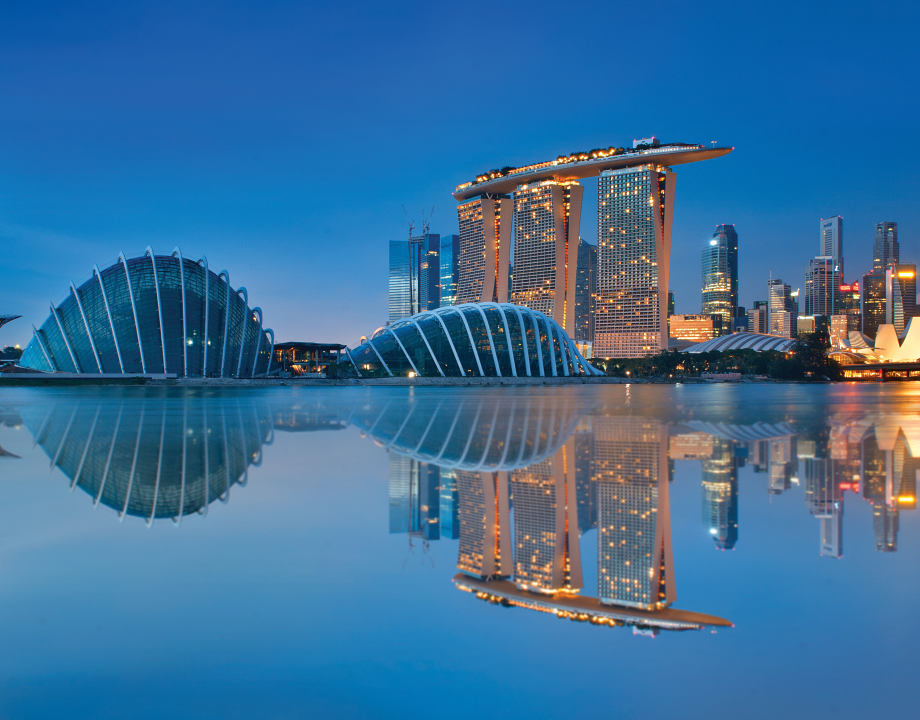
The city of Dubai, located in the United Arab Emirates (UAE), has undergone a remarkable transformation in the 21st century. From a small desert city with a population of just under 1 million in 2001 to the vibrant, modern metropolis it is today with over 3 million people, Dubai has become a true global city.
Dubai’s economic success has been largely due to its status as a tax-free financial hub and its strategic location at the crossroads of Europe, Asia and Africa. The government has invested heavily in infrastructure such as roads, ports and airports, making it a major hub for international trade, travel and tourism.
In addition to these investments, the government has also heavily invested in creating a world-class leisure sector with iconic landmarks such as the Dubai Mall and Burj Khalifa. These developments have attracted an influx of international tourists who come to experience the city’s luxury shopping and entertainment venues.
The economic growth in Dubai has been dramatic and sustained, with its GDP growing by almost five percent year-on-year since 2003. This growth has been driven by the high quality of life and world-leading standards of infrastructure that has propelled Dubai into the top ranks of global cities.
As well as continuing to attract top talent from around the world, Dubai’s government is also focusing on initiatives to diversify its economy and reduce its reliance on oil and gas revenues. These initiatives include investing in renewable energy sources, technology and innovation, all of which will continue to drive the city’s growth in the years to come.
In short, Dubai has come a long way since 2001, firmly establishing itself as one of the world’s leading cities when it comes to economy, infrastructure and quality of life. This impressive transformation can only be admired as Dubai continues to rise higher and higher on the list of global cities.

Dubai is one of the most popular tourist destinations in the world, drawing in people from all walks of life to its vibrant landscape.
Today, Dubai is home to iconic attractions such as the Burj Khalifa, the world’s tallest building; and the Dubai Mall, the world’s largest shopping mall.
But this wasn’t always the case. In fact, only a few decades ago, Dubai was a small fishing village with a population of less than 200,000 people.
The transformation of Dubai into a global powerhouse began in the 1970s, when Sheikh Rashid bin Saeed Al Maktoum, ruler of Dubai, implemented major changes to the infrastructure of the city. This included investments in education, health and transport. Buoyed by oil reserves and increasing trade, Dubai’s economy rapidly grew.
In the 1980s, Dubai began to diversify its economy with more focus on tourism and property development projects. These included building residential complexes, hotels and shopping malls.
Over the years, the government has worked hard to promote the emirate. Major international events have been held in Dubai, such as the Dubai Shopping Festival and the Dubai World Cup Horse Race. The successful hosting of these events attracted more people to visit Dubai, and thus boosting tourism numbers significantly.
The introduction of freehold property ownership also helped to attract foreign investors. This further propelled the city’s economy, creating numerous job opportunities for people from around the world.
With its modern infrastructure, stunning skyline and luxurious lifestyle offerings, Dubai has emerged as a top tourist destination today. It is now home to some of the world’s most luxurious hotels and shopping malls, making it a perfect destination for both business travelers and holidaymakers alike.
Dubai continues to progress forward and shows no signs of slowing down in its ambition for economic growth and success. With increasing numbers of tourists each year, it looks set to establish itself as one of the top tourist destinations in the world for decades to come.
Dubai is known as the “City of Gold” for good reason. This glittering metropolis, located in the United Arab Emirates, has become a hub for luxury shopping, high-rise living, and year-round sunshine. While the modern cityscape may be what draws millions of tourists each year, the city’s history and culture are equally important.
Dubai was founded as a fishing village in the early 19th century and was an integral part of international trade in the region. With the discovery of oil in 1966, the city began to experience rapid growth and development. This period saw the emergence of several iconic landmarks such as the Burj Al Arab hotel and the world’s tallest building, Burj Khalifa. Luxury malls, five-star restaurants, grand palaces, and mesmerizing architecture have been built in recent years to attract tourism and investors.
When it comes to gold, Dubai is renowned for its bright yellow metal. Gold souks (local markets) are scattered around the city where you can buy jewelry made from real gold, silver, and other precious metals. Gold also has religious and cultural importance to Dubai citizens, being a symbol of wealth and prosperity.
Aside from its breathtaking architecture and stunning views of the Arabian Gulf, there are many other attractions in Dubai. Popular activities such as skiing on an indoor slope, taking a thrilling Desert Safari, or visiting some of the city’s breathtaking mosques enable visitors to delve into its culture and heritage.
In short, Dubai IS truly a glittering city of gold! The wealth of its culture, heritage, and dazzling landscape are sure to leave you spellbound. Whether you’re there for business or pleasure, one visit is never enough!
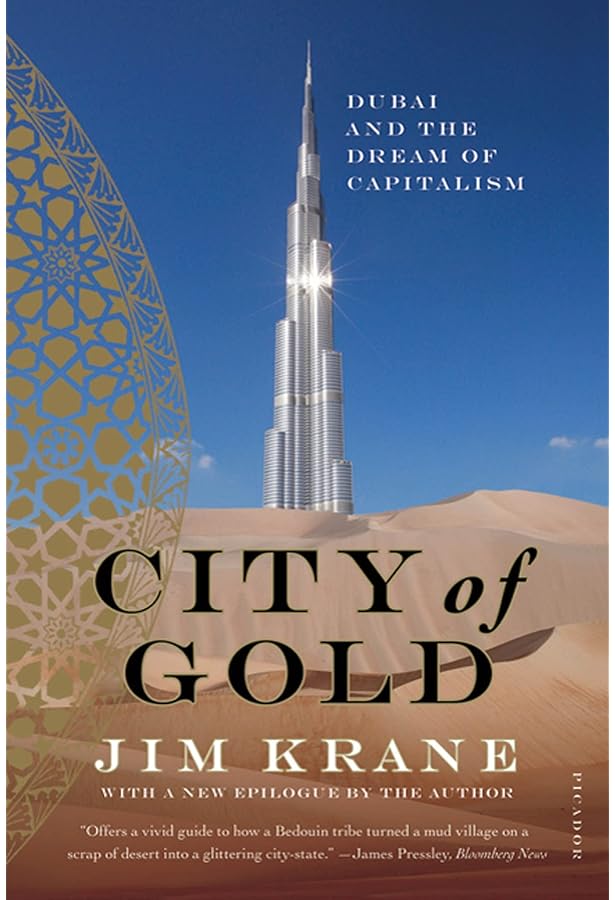
In the Glittering City of Gold, the main change is that the city is now made entirely of gold. Additionally, the city is now much more accessible, with several entrances and exits built into the city. Finally, the city is now home to several new shops and attractions.
Dubai is a global city that offers breathtaking experiences and sights to behold. From the iconic Burj Khalifa skyscraper- the tallest building in the world, to historic monuments like the Dubai Creek, Dubai is a must-visit destination for all kinds of travellers.
The Dubai Creek is a natural inlet of the sea and has been the core of the city for centuries. It is a designated area for trading on both sides of the creek, where you can find traditional wooden boats called dhows. Visitors can take an abra ride, a small boat taxi, to explore the area. Traditional markets such as the Spice Market and the Gold Souk are also located in this area, where you can find diverse range of products and souvenirs.
One of the most incredible constructions in Dubai is the Burj Khalifa, an impressive 828-meter skyscraper that overlooks the city. The observation deck at the top of the tower offers visitors incredible views and allows them to capture breathtaking images of the city in its entirety. A variety of attractions lie near it such as The Dubai Mall, where you can find a plethora of restaurants, shopping outlets, and entertainment options.
The Palm Jumeirah is another unique spot in Dubai that offers a mix of luxury and relaxation. This man-made archipelago comprises of luxury hotels, resorts, and beach clubs. Visitors can enjoy a wide range of activities such as swimming in one of its lagoons, exploring its aquariums, or indulging in some delicious seafood at one of its many eateries.
For more traditional experiences, Al Fahidi Historic District is a great place to visit. This historical neighbourhood is one of the oldest residential areas in Dubai and you can find buildings that date back to the pre-oil boom era. Visitors can take a heritage walking tour to explore its narrow alleys and uncover its traditional style buildings.
From awe-inspiring modern attractions to serene historical sites, all these wonders await you in Dubai. Whether you’re looking for some relaxation or an adventure, this vibrant city has something special to offer everyone. Are you ready to discover the wonders of Dubai?

1. Dubai has undergone major changes in the past few years. The city has been extensively developed with new infrastructure and attractions.
2. Dubai is now a major tourist destination, with millions of visitors each year.
3. The city has become a major center for business and finance.
4. Dubai has also become a popular destination for luxury shopping.
The Arabian Peninsula is a region known for its traditional Arabic culture, exotic wildlife, and mysterious beauty. But, for travelers who visit the area, it is also an amazing place to explore and experience a bit of modern glamour in the form of Dubai. Dubai, which is the largest city in the United Arab Emirates (UAE), does not disappoint when it comes to luxury hotels, extravagant shopping experiences, and world-class cuisine.
A trip to Dubai is an unforgettable journey that combines incredible sights and sounds, with plenty of opportunities to discover the unique culture of the Emirates. From the moment visitors arrive in Dubai, they are met with towering skyscrapers that pierce the horizon as if they were part of a modern Arabian fairytale.
Although it’s known for its bright lights and modern cities, Dubai also has plenty of attractions to explore in the great outdoors. The city is located right on the Persian Gulf, and visitors can travel by boat to the nearby island of Al Marjan to take in some spectacular views of the Arabian Sea. Beach enthusiasts can also take a stroll down some of Dubai’s stunning white-sand beaches.
When looking for a place to stay, tourists will find plenty of options to choose from. The city is home to some of the world’s most luxurious hotels and resorts, as well as more budget-friendly accommodations. Whether you’re looking for five-star luxury or budget-friendly beachside condos, there’s something in Dubai for everyone.
When it comes to shopping, Dubai offers some of the best shopping experiences in the world. From high-end boutiques to bustling street markets, you can find just about anything you’re looking for in this vibrant city. There are also several local malls that feature a variety of international brands and local designers.
As well as great shopping opportunities, Dubai offers some truly unforgettable experiences. From hot air balloon rides over the city skyline to unique desert safaris, you can create some wonderful memories in this famous destination.
Overall, a trip to Dubai is sure to be an unforgettable one. With its combination of modern glitz and traditional charm, it’s no surprise that it’s one of the most popular tourist destinations in the Arabian Peninsula. Whether you’re looking for luxury shopping experiences or idyllic days spent on the beach, there’s something for everyone in this amazing city – making it a must-visit destination for anyone looking for a memorable holiday.
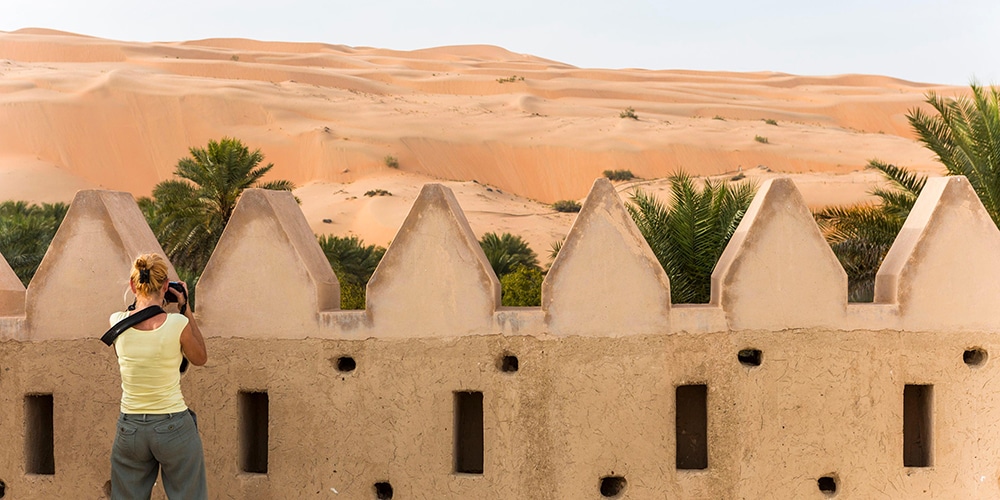
This trip was unforgettable because it was my first time out of the country and my first time in the Middle East. I learned so much about the culture and the people there. I also got to see some amazing places and experience some really unique activities.
Dubai is a spectacular destination for those looking to get away and explore the wonders of the Middle East. Located in the United Arab Emirates, Dubai is known for its breathtaking skyline, world-class shopping, exciting experiences, and modern amenities. Dubai has been described as an oasis of sophistication, luxury, and grandeur.
Dubai is a popular destination for travelers from around the world because of its unique culture and its world-famous attractions. This city is home to some of the most spectacular sites in the world, including the Burj Khalifa, which is the tallest building in the world; the Palm Islands, which are three artificial islands shaped like a palm tree; and the Burj Al Arab hotel, which is shaped like a sail.
In addition to its numerous attractions, Dubai is well known for its amazing shopping opportunities. With its many malls, shopping centers, and boutiques, visitors can find something to suit every taste and budget. Whether you’re looking for souvenirs or designer labels, you’ll find it in Dubai.
In addition to shopping and sightseeing, Dubai also has plenty of activities to offer. From desert safaris to camel rides, visitors can experience the true flavor of the Middle East. Whether you’re looking for adventure or relaxation, you can find it in Dubai.
For those looking for a luxurious escape, Dubai also has plenty of resorts and hotels to choose from. Known for their high standards of service and accommodations, these hotels provide guests with all the comforts of home while still allowing them to immerse themselves in the culture and beauty of Dubai.
No matter how long your stay in Dubai is, there is no denying that this city offers something for everyone. Whether you’re looking for a thrilling adventure or an opportunity to relax and enjoy some luxurious amenities, there is no better place to go than Dubai. So if you’re looking for a spectacular getaway to the Middle East, look no further than Dubai.

In recent years, the Middle East has become a more popular tourist destination, with people travelling there for its ancient culture, stunning scenery and luxurious hotels.
Improvements to the region’s infrastructure, such as the opening of new airports and the development of luxury resorts, have made it easier and more enjoyable to travel in the Middle East. Additionally, the region’s safety has improved in recent years, with the exception of a few areas.
The Middle East is home to some of the world’s most famous ancient sites, including the pyramids of Giza in Egypt and the ruins of Petra in Jordan. It also has some of the most beautiful landscapes, with rugged mountain ranges, sandy deserts and crystal-clear seas.
The region’s luxury hotels offer some of the best facilities in the world, with spacious rooms, excellent restaurants and luxurious spas.
Overall, the Middle East is a stunning destination with something to offer everyone. Whether you’re interested in history, nature or luxury travel, you’ll find something to enjoy in the Middle East.
Dubai is a city of unrivaled grandeur and beauty. The city is home to the world’s tallest building, the luxurious Burj Khalifa, and the world’s largest shopping mall, the Dubai Mall. With its many attractions, it’s no wonder that people from all over the world flock to this vibrant destination for both business and pleasure.
Visitors to Dubai will find plenty of opportunities to experience the magic of the city. From its stunning architecture, pristine beaches and exotic nightlife, there is something for everyone in Dubai. The city also offers an exciting array of activities that cater to all ages.
One of these activities is a tour of the major monuments and landmarks in the city. The Burj Khalifa is undeniably the most impressive, standing at 830 metres tall, it is the world’s tallest building and has become the symbol of modern Dubai. Along the waterfront, the Palm Jumeirah is one of Dubai’s most iconic sites. This man-made island is home to some of the most luxurious resorts and hotels in the world. There are also plenty of other sights to explore such as Souk Madinat Jumeirah, which offers an authentically Arabian shopping experience, and Ski Dubai where visitors can ski or snowboard indoors in -2 degrees Celsius temperature!
Experiencing the diverse culture and enchanting atmosphere of Dubai can be achieved through its vast selection of attractions and places to visit such as parks and souks. A desert safari adds a thrilling dimension to any vacation as you ride across sand dunes at sunset. Hot air balloon rides offer a unique view of the skyline, while Al Bastakiya District provides a glimpse into traditional Arab architecture. If you’re looking for something truly thrilling, there is always a visit to IMG Worlds of Adventure – the world’s largest indoor theme park.
No matter how you choose to experience the magic of Dubai – whether it’s a tour of its landmarks, tracing its culture or indulging in its adventures – it’s guaranteed to be an unforgettable experience. So come and have an unforgettable time with your family and friends: Experience the magic of Dubai!
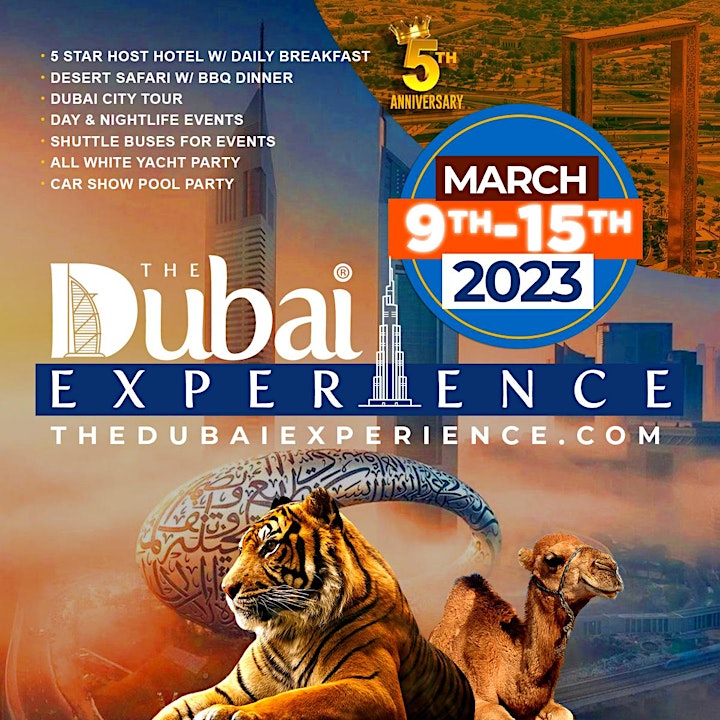
The city of Dubai in the United Arab Emirates has undergone a dramatic transformation in recent years. The city has been transformed from a small fishing village into one of the most important and luxurious destinations in the world.
Some of the most impressive changes in Dubai include the construction of the world’s tallest building, the Burj Khalifa, the development of the world’s largest shopping mall, the Dubai Mall, and the construction of dozens of luxury hotels and resorts.
Dubai is a city that is constantly changing and evolving, and there is always something new to see and experience in this amazing destination.
The prestigious and luxurious destination of Dubai is known as the “Pearl of the Gulf.” Bordering the Arabian Sea, this port city has been a major hub for commerce and trade since the 19th century. The luxurious journey to Dubai is one of the most delightful experiences imaginable.
From its iconic skyline to the world-famous shopping districts, Dubai is a mecca for tourists from around the globe. Visiting this sophisticated city by day offers a true sense of culture, luxury and beauty, with attractions such as the renowned artificial Palm Islands, the Jumeirah Beach and Burj Khalifa, the tallest building in the world.
At night, visitors can enjoy a luxurious feast of flavors. From tasty street food to Michelin-star restaurants, there’s something to satisfy every palate. For those seeking exclusive experiences, Dubai is also home to a wealth of private yacht charters, VIP nightclubs and branded celebrity events, as well as five-star resorts where guests can indulge in a perfect blend of relaxation and indulgence.
For an authentic experience of Dubai’s golden age, visitors can take a tour of the historic Gold Souk. This bustling marketplace has been the heart of the city’s gold trade since the late 19th century. Here, shoppers will find a vast array of jewelry pieces crafted with precious and semi-precious stones.
What makes Dubai particularly special is its modern fusion of East and West. Visitors can explore traditional souks such as Deira’s Spice Souk or experience Dubai’s vibrant nightlife with bars and nightclubs playing western music. With its cosmopolitan atmosphere, Dubai is unlike any other city in the world.
The ultimate luxurious journey to Dubai offers an unforgettable experience for everyone. Whether it’s a weekend getaway or a longer trip, visitors are guaranteed to be captivated by this sparkling jewel in the Arabian Sea.
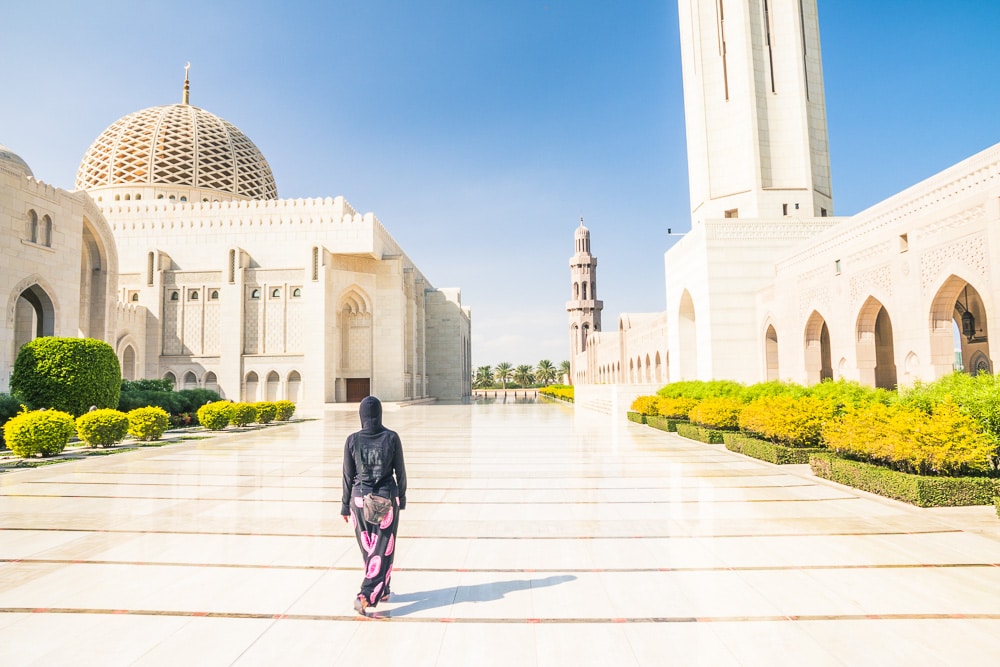
There have been many changes and improvements made to this tourist destination over the years.
To start with, the infrastructure has been greatly improved, with new roads and bridges being built, and old ones being repaired or replaced. This has made it much easier and quicker to get to the Pearl of the Gulf, and has made it a more attractive destination for tourists.
Secondly, the facilities available for tourists have been greatly expanded and upgraded. There are now more hotels, restaurants, shops and other amenities, making it a more complete holiday destination.
Finally, the area has been cleaned up and made more attractive, with landscaping and other improvements. This has made it a more pleasant place to visit, and has helped to boost tourism numbers.
Dubai is a city located in the United Arab Emirates, known for its extravagance and opulence. It is the second most populous city in the UAE, with a population of 2,106,177 people as of 2020. As the capital and most populous city of the UAE, Dubai has become one of the world’s most popular tourist destinations.
Dubai is one of the seven emirates that comprise the United Arab Emirates, and covers an area of 4,114 square kilometers. Dubai has a unique blend of cultures and ethnicities that makes it an exciting place to visit. The World Trade Centre, Burj Al Arab, Palm Jumeirah, and Sheikh Zayed Road are just some of the landmarks that have made Dubai a world-famous attraction.
Dubai is also known as “The City of Dreams” due to its ability to attract people from all over the world with its luxurious lifestyle and lavish events. The city offers a variety of activities that appeal to different kinds of travelers. Whether you’re looking for a cultural experience or an adventure, Dubai can provide it all.
When it comes to shopping, Dubai is one of the most renowned cities in the world. The extravagant malls such as Dubai Mall and Mall Of The Emirates offer luxury shopping at its best. The souks are traditional markets where you can get a glimpse of traditional Middle Eastern culture. In addition to the shopping centers, Dubai boasts numerous restaurants offering cuisines from all over the globe.
In terms of nightlife, Dubai is home to some of the most vibrant clubs and lounges in the Middle East. From plush VIP lounges to relaxed beach bars, there’s something for everyone.
But more than anything else, Dubai is known for its impressive landscapes and structures. From the towering Burj Khalifa skyscraper to the serene dry lake beds at Al Qudra, Dubai has something special to offer no matter what your interests are.
For those looking for unique experiences and unforgettable memories, Dubai is definitely the place to be. Whether you’re in search of a luxurious lifestyle or an adventure-filled holiday, this city will not disappoint. So come visit ‘The City of Dreams’ and make your dreams come true!

The city of dreams awaits you has improved by adding a new section that allows users to explore the city. This new section includes different areas to visit, including a shopping district, a theater district, and a park. Additionally, the city has been updated with new graphics and textures to create a more immersive experience.
The Jewel of the Middle East, Dubai, is a city unlike any other in the world. Located on the Persian Gulf, it is home to some of the most luxurious and opulent hotels and resorts on the planet, as well as a vibrant cultural scene that draws tourists from around the globe.
The history of Dubai stretches back over thousands of years. Although not much is known about it in its early days, archeological evidence indicates that it was inhabited by hunter-gatherers from the region. Later, it developed into an important trading hub for commodities such as frankincense and dates between the Middle East and India.
In 1833, following a series of skirmishes between local tribes, Dubai came under the rule of the Al Maktoum dynasty which has been ruling the city ever since. The current ruler, Sheikh Mohammed bin Rashid Al Maktoum, has embraced modernity, transforming what was once an isolated desert city into one of the most cosmopolitan and elite cities in the world.
Since the early 1990s, Dubai has undergone a massive transformation, becoming home to some of the world’s most iconic structures like the Burj Khalifa and Palm Jumeirah. It has also become a hub for trade and finance, boasting one of the busiest ports in the world and becoming a major center for banking and real estate investment.
Today, Dubai is famous for its high-end shopping malls and extravagant parties in addition to its somber desert culture. The city is home to the world’s tallest building, the world’s biggest shopping mall and one of the world’s most expensive hotels, making it truly a unique place to explore. With its endless attractions and activities, it’s no surprise that Dubai is known as the “Jewel of the Middle East”.
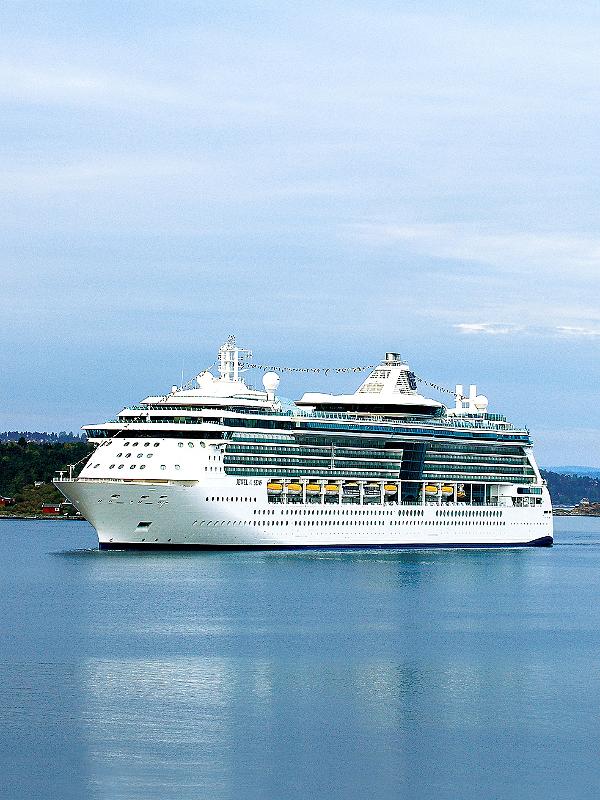
The Jewel of the Middle East is a luxurious hotel that is located in the heart of Dubai. The hotel offers guests stunning views of the city skyline and the Arabian Gulf. The hotel has undergone a number of renovations and changes in order to offer guests a more luxurious and comfortable experience.
Dubai is a popular destination for its beautiful beaches, luxurious hotels, and extravagant shopping malls. It’s also one of the countries in the world with the most sunshine, making it an ideal place to soak up some Vitamin D. Major outdoor attractions like Burj Al Arab, Palm Jumeirah, and the Burj Khalifa are just a few of the places that attract tourists from around the world to soak up the sun in this vibrant city.
Sunbathing is a favorite activity in Dubai as temperatures can reach as high as 40°C (104°F) during the summer months. The warm weather entices locals and tourists alike to visit the city’s white sandy beaches such as Jumeirah Beach, Kite Beach, and La Mer Beachfront. Many of these beaches have been designed with beachgoers in mind, offering numerous amenities such as sunbeds, umbrellas, restaurants and beach bars. Visitors can relax under the sun while enjoying a variety of snacks and drinks.
Another great way to soak up the sun in Dubai is to take an adventure on Arabian Desert Safaris. These safaris are an exciting way to explore the vast desert landscapes by day or night and includes activities such as sandboarding, camel rides, dune bashing, and henna painting. For something a little more luxurious, visitors can take a private tour in an air-conditioned limousine or helicopter to get a different perspective of the city and its attractions.
There are also plenty of outdoor activities that visitors can enjoy while soaking up some rays such as golfing at one of Dubai’s many courses, exploring ski slopes at Ski Dubai, or flying at Dubai’s Skydive Dubai. There’s no shortage of ways to make the most out of your sunny day in Dubai!
From its beaches to its desert safaris, there’s no shortage of ways to make the most out of your time in Dubai and soak up some sun. Whether you’re looking for adventure or relaxation, Dubai has something for everyone. It’s no wonder that this vibrant city continues to be a popular destination for sun seekers from all over the world!

The UAE is a desert country, but it has made great strides in making its environment more livable. The country has made a concerted effort to develop its water resources, and it has built an impressive infrastructure of dams, pipelines, and reservoirs. The country has also made great strides in renewable energy, with a goal of generating 24% of its energy from renewables by 2021.
attractions
Dubai is a tourist destination renowned for its grandeur and exquisite beaches, but a lesser-known fact is that it is also a hub of fun and adventure. From theme parks to aquatic adventures, Dubai has attractions that are both stimulating and exciting.
The iconic Palm Jumeirah is one of the most popular destinations in the city, featuring shopping malls, luxury hotels, and world-class restaurants. But the main attraction of this oasis of fun and adventure is its theme parks. No matter the age group, there’s something for everyone here, with over 20 parks and attractions in the area.
The first must-visit on this list is the Dubai Parks & Resorts, the largest integrated theme park destination in the Middle East. Here you will find theme parks such as Motiongate, Legoland Dubai, and Bollywood Parks, along with Riverland Dubai and Lapita Hotel & Resort. There are also numerous restaurants, shopping outlets, as well as live entertainment available.
The Wild Wadi Waterpark located in Jumeirah is another amazing experience for people of all ages. With over 30 thrilling rides, slides, water rides and other attractions, this park is sure to leave you feeling elated. If you’re looking for a more gentle experience, visit the Lost Chambers Aquarium which contains over 65,000 marine animals from around the world.
No visit to Dubai would be complete without visiting Ski Dubai. Located at the Mall of Emirates, this indoor ski resort offers visitors the chance to ski or snowboard down five different slopes of varying difficulty. For those looking for something tamer, there are snow activities such as snow tubing and tobogganing or even arctic-themed ice skating.
This list barely scratches the surface of what Dubai has to offer in terms of fun and adventure. With over 100 attractions scattered across the city, there is something for everyone here while they holiday in this City of Gold. From theme parks to waterparks and aquariums to ski slopes, Dubai is an oasis of fun and adventure that continues to astonish travelers from around the world.

In the past, the oasis has been a place of fun and adventure. However, recent changes have made it more difficult to access the oasis, and it has become less fun. The oasis is now more like a desert, with little water and no shade.
You cannot copy content of this page